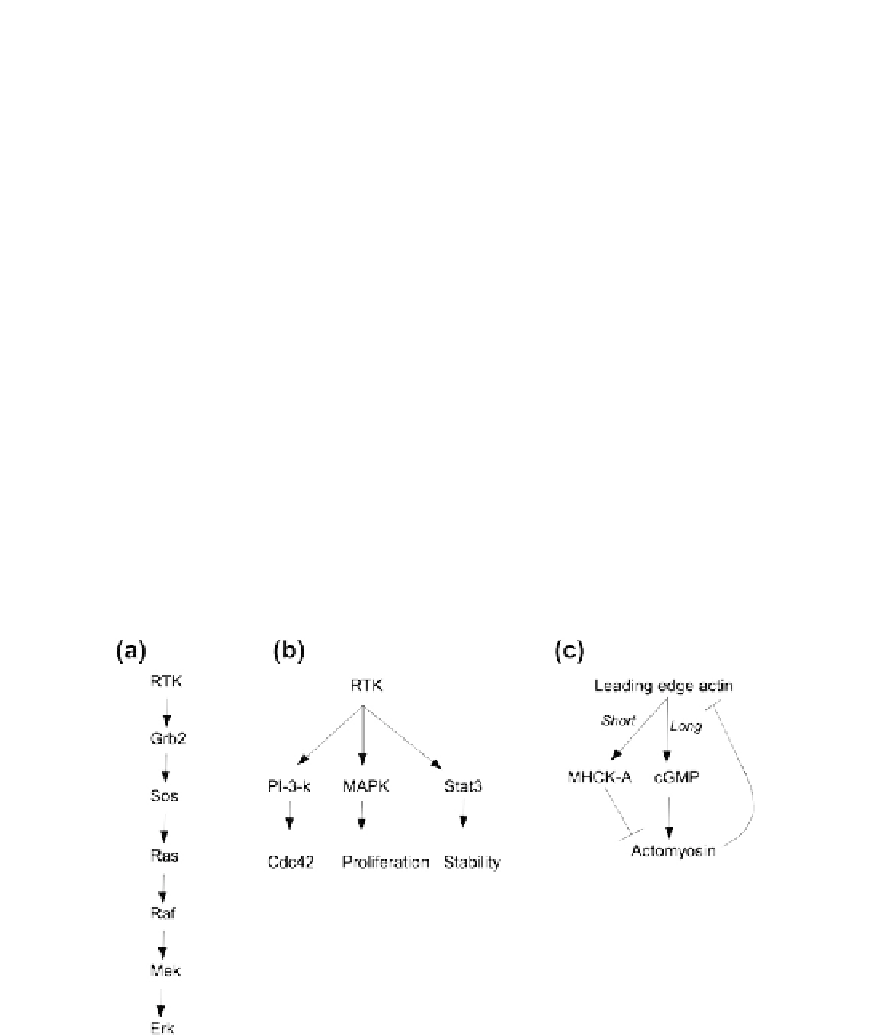Biology Reference
In-Depth Information
then move to modelling via special training courses meant for that purpose, promise to aid
mutual understanding. This chapter will introduce the main reasons to model without going
into the details of how it is done; the following chapters will illustrate different strategies for
representing morphogenesis in computers and in engineered cells.
THE PURPOSES OF MODELLING
From the point of view of a developmental or cell biologist interested in morphogenesis,
there are three main uses for modelling, one of them being hypothesis-led and the other two
being exploratory.
Hypothesis Testing
Hypothesis-led modelling consists of using a model to test whether a particular hypoth-
esis about a morphogenetic mechanism, usually derived from consideration of wet-lab
data, is feasible. It is a response to the challenge of the complexity of real living systems,
which is the main problem of analytical research. When describing morphogenetic events,
researchers tend to draw simple control pathways that are either direct linear links from
receptor to effector (for example,
Figure 25.2
a), branching links from one receptor to multiple
effectors (for example,
Figure 25.2
b) or simple feedback loops (for example,
Figure 25.2
c). In
reality, almost every entity in these pathways also appears in other pathways that are not
drawn because they are believed either to be completely irrelevant or of minor importance
FIGURE 25.2
Examples of simple pathway diagrams (all relevant to events described in other parts of this
topic). (a) Shows a linear representation of a pathway involved in growth control.
7
(b) Shows a branched pathway
involved in branching morphogenesis by MDCK cells.
8
(c) Shows a summary of the leading edge
d
trailing end
mutual inhibition of migrating cells discussed in Chapter 5. Most of the molecules mentioned also connect to many
other molecules and hence pathways.



